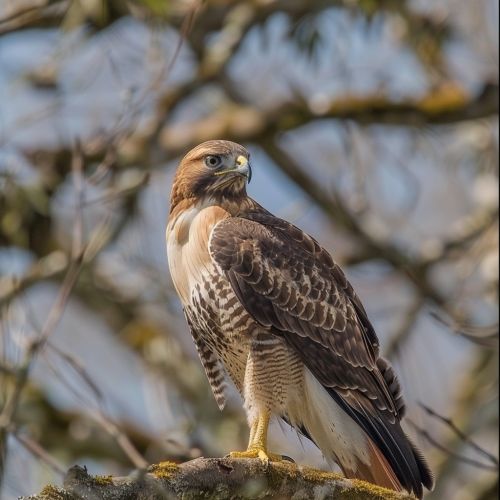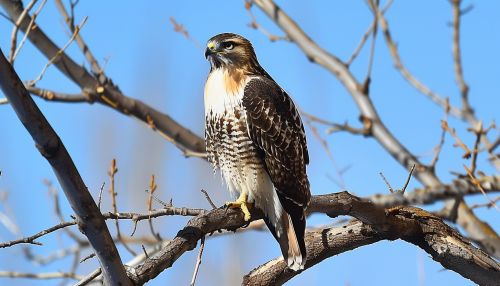Buteo
Introduction
The genus Buteo encompasses a group of medium to large-sized birds of prey commonly referred to as buzzards or hawks. These raptors are characterized by their broad wings and robust bodies, which make them highly efficient hunters. Buteo species are found across various continents, including North America, South America, Europe, Asia, and Africa. This article delves into the taxonomy, morphology, behavior, ecology, and conservation status of Buteo species, providing a comprehensive overview of these fascinating birds.
Taxonomy
The genus Buteo belongs to the family Accipitridae, which also includes eagles, kites, and harriers. The genus was first described by the French naturalist Bernard Germain de Lacépède in 1799. Buteo is derived from the Latin word for buzzard or hawk. The genus comprises over 25 species, with notable examples including the Red-tailed Hawk (Buteo jamaicensis), the Common Buzzard (Buteo buteo), and the Swainson's Hawk (Buteo swainsoni).
Morphology
Buteo species exhibit a range of morphological adaptations that facilitate their predatory lifestyle. These birds typically have broad, rounded wings and short tails, which provide excellent maneuverability and stability during flight. Their plumage varies widely among species, often featuring a mix of browns, whites, and grays, with some species displaying distinctive markings such as the red tail of the Red-tailed Hawk.


The beak of Buteo species is hooked and sharp, designed for tearing flesh, while their talons are powerful and curved, enabling them to grasp and kill prey efficiently. Sexual dimorphism is present in some species, with females generally being larger than males.
Behavior
Buteo species are primarily diurnal hunters, relying on their keen eyesight to locate prey from great distances. They employ various hunting techniques, including soaring, perching, and hovering, to capture a wide range of prey items such as small mammals, birds, reptiles, and insects. Some species, like the Rough-legged Buzzard (Buteo lagopus), exhibit seasonal variations in their diet, switching to different prey types depending on availability.
These birds are also known for their territorial behavior, particularly during the breeding season. They construct large nests in trees or on cliffs, often reusing and refurbishing them year after year. Buteo species typically lay 2-4 eggs per clutch, with both parents participating in incubation and chick-rearing duties.
Ecology
Buteo species occupy a diverse range of habitats, from forests and grasslands to deserts and mountainous regions. Their adaptability to different environments is a key factor in their widespread distribution. These raptors play a crucial role in their ecosystems by controlling populations of small mammals and other prey species, thus maintaining ecological balance.
Migration is a common behavior among many Buteo species, particularly those breeding in temperate or arctic regions. For example, the Swainson's Hawk undertakes one of the longest migrations of any raptor, traveling from North America to South America each year.
Conservation Status
The conservation status of Buteo species varies widely. While some species, like the Red-tailed Hawk, are abundant and classified as Least Concern by the International Union for Conservation of Nature (IUCN), others face significant threats. Habitat loss, pesticide use, and human persecution are among the primary challenges affecting Buteo populations.
Efforts to conserve these birds include habitat protection, legal protection from hunting and trapping, and public education campaigns to raise awareness about their ecological importance. Conservation organizations also conduct research and monitoring programs to track population trends and identify emerging threats.
